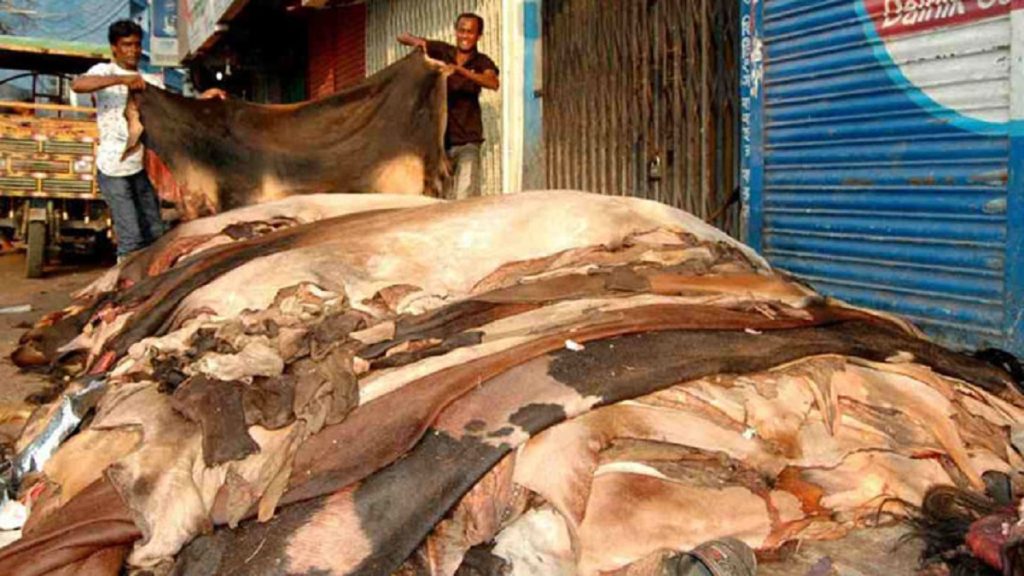In preparation for the Eid-ul-Azha festival, during which an estimated 13 million cattle will be sacrificed nationwide, the government has intensified efforts to manage animal hides and skins.
On Thursday, the Ministry of Commerce issued directives to form five committees to oversee the process: a central joint coordination committee, divisional committees, a monitoring team, district monitoring teams, and a control cell.
The central joint coordination committee, headed by the commerce secretary, will supervise the collection, preservation, transaction, and transport of hides and skins and address any related issues.
Divisional committees will focus on similar tasks within their respective jurisdictions. They will ensure the availability of necessary salt, monitor transactions, and address preservation and transport concerns.
The monitoring committee, led by Deputy Secretary Md Sayed Ali, will serve as a communication link with tanners nationwide, including those in the Dhaka city corporations, Posta, Savar, and Natore.
District monitoring committees will handle local issues and transactions within their districts.
The decision to form these committees followed a recent stakeholder meeting chaired by the former Senior Commerce Secretary Tapan Kanti Ghosh. Sources confirmed that the Ministry of Home Affairs is also facilitating hide transport and preventing smuggling.
Police, Border Guard Bangladesh (BGB), and intelligence services have been alerted to ensure smooth transportation and heightened border monitoring.
To support hide preservation, state agencies are preparing to make salt available at lower prices. The country recorded a production of 2.3 million tonnes of salt this year, the highest in 62 years. Waste management and easing transportation are also key focus areas.
The commerce ministry has requested the Bangladesh Rural Electrification Board (BREB) to ensure uninterrupted electricity supply to the Savar tannery estate for three months post-Eid, a critical period for tanners collecting their annual input.
The Ministry of Fisheries and Livestock has trained 3,000 slaughterers to maintain hide quality and plans to expand these training programs.
A senior official noted that various agencies have already been instructed to act on the decisions made during the commerce ministry meeting. A virtual meeting with divisional and deputy commissioners is also planned.
Ensuring fair salt prices remains a priority, with the commerce ministry urging relevant agencies to monitor and control salt costs. Over half of the country’s hides and skins are collected during Eid-ul-Azha, with the Bangladesh Trade and Tariff Commission (BTTC) estimating a national supply exceeding 20 million units.
As Eid-ul-Azha approaches, approximately 12.98 million animals are ready for sacrifice, marking a 3% increase in supply from the previous year. Over 3,000 temporary cattle markets will be set up nationwide.
Fisheries and Livestock Minister Abdur Rahman stated the maximum anticipated demand is 10.7 million, leaving a surplus of 2.27 million cattle.
The supply includes 5.27 million cows, 0.161 million buffaloes, 6.85 million goats, 0.77 million sheep, and 1,850 other animals.
Prices for salt-applied hides from sacrificial cows have been set at Tk 55-60 per square foot (sq ft) in Dhaka and Tk 50-55 per sq ft outside the capital, reflecting increases from last year.
Goat hide prices are Tk 20-25 per sq ft, and baqri skin prices are Tk 18-20 per sq ft. The commerce ministry and local leather sector representatives determined these rates.
